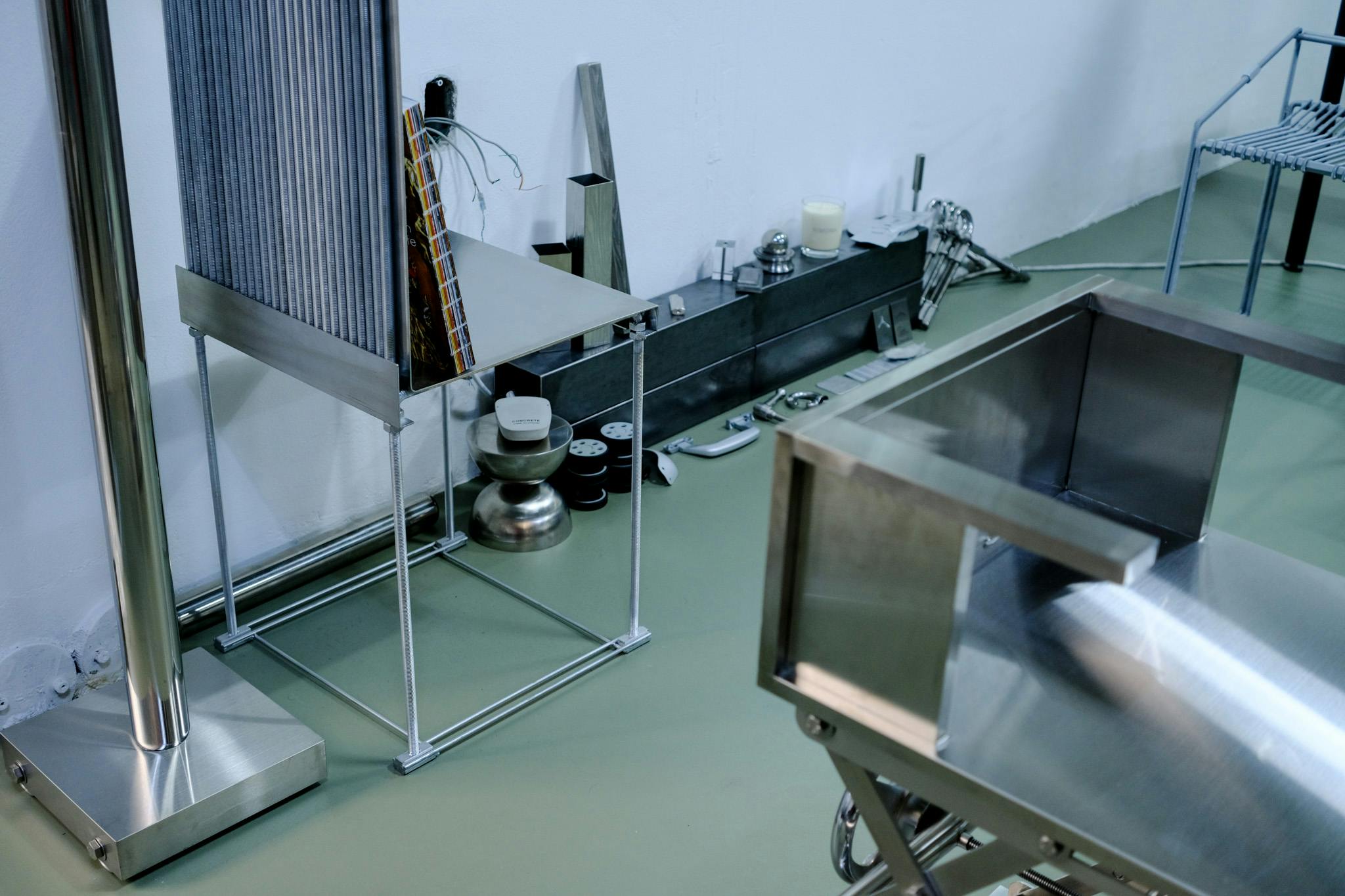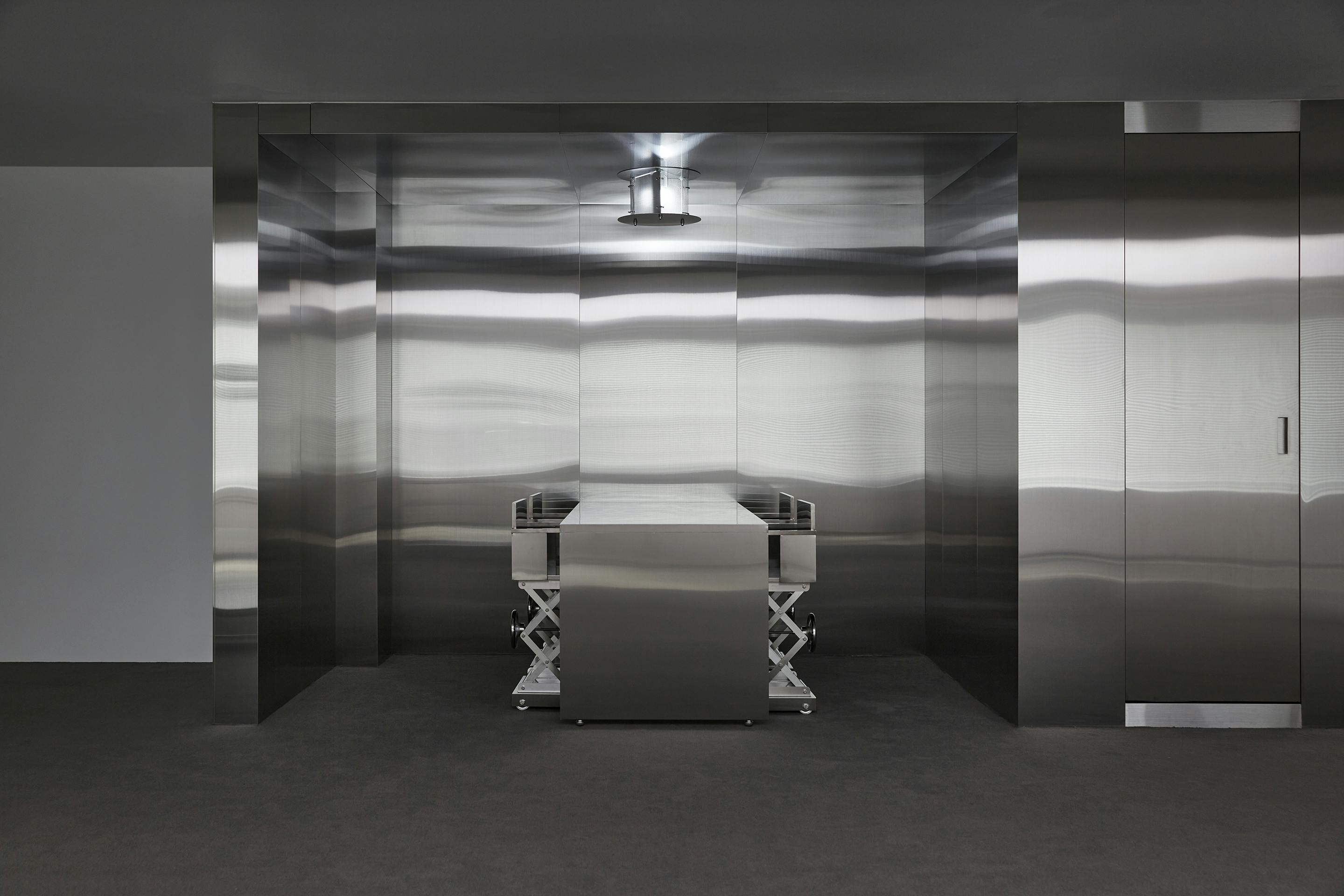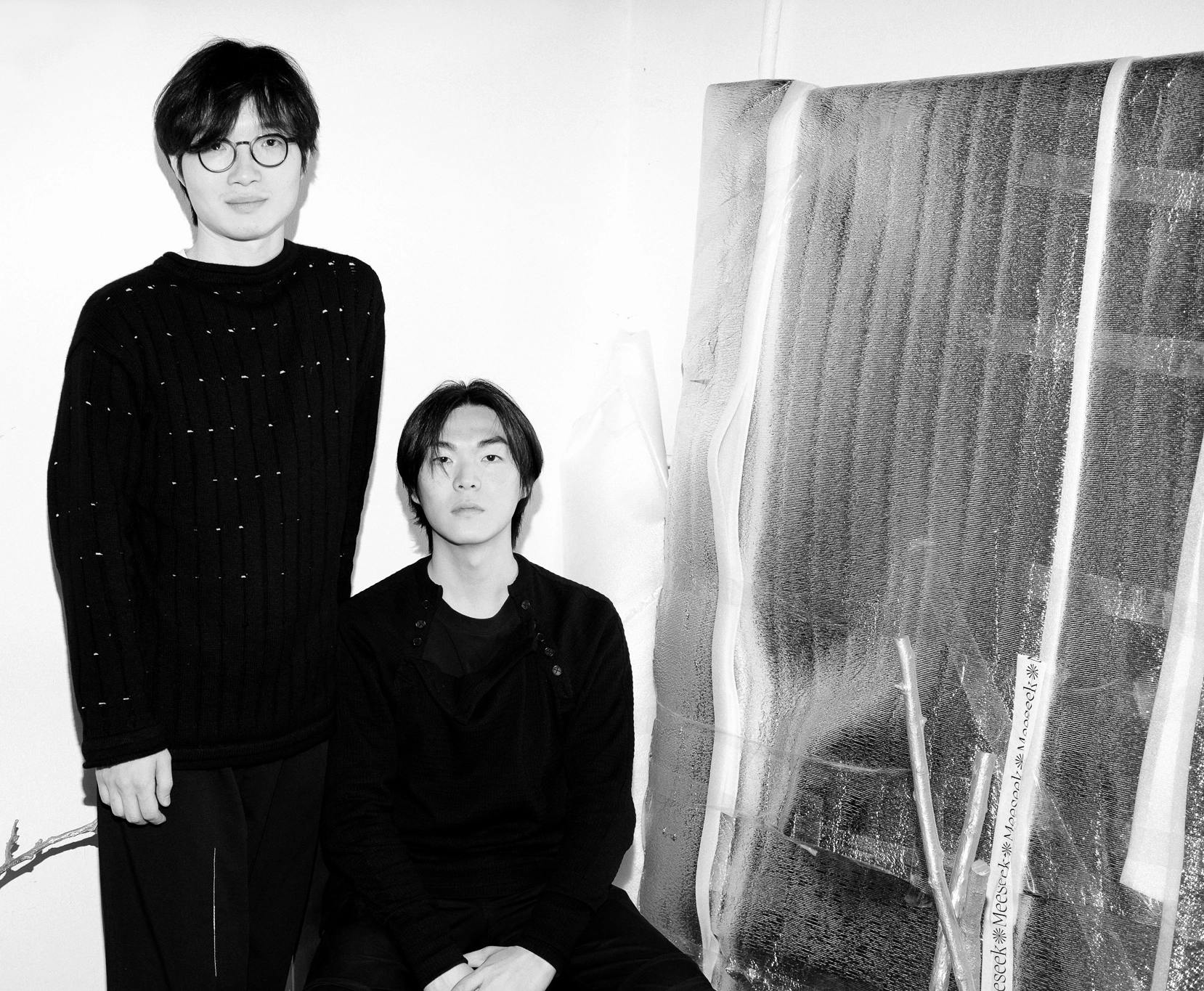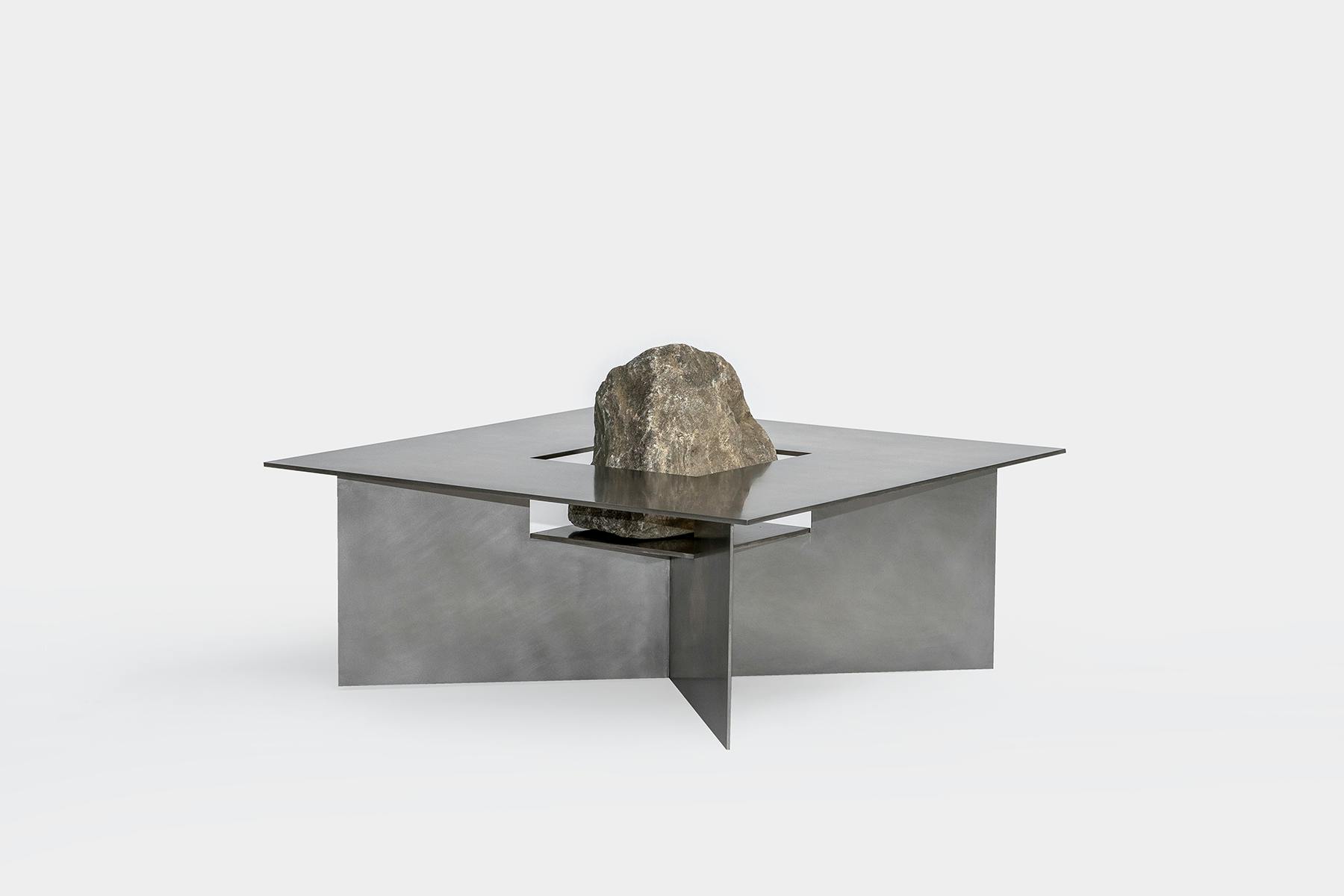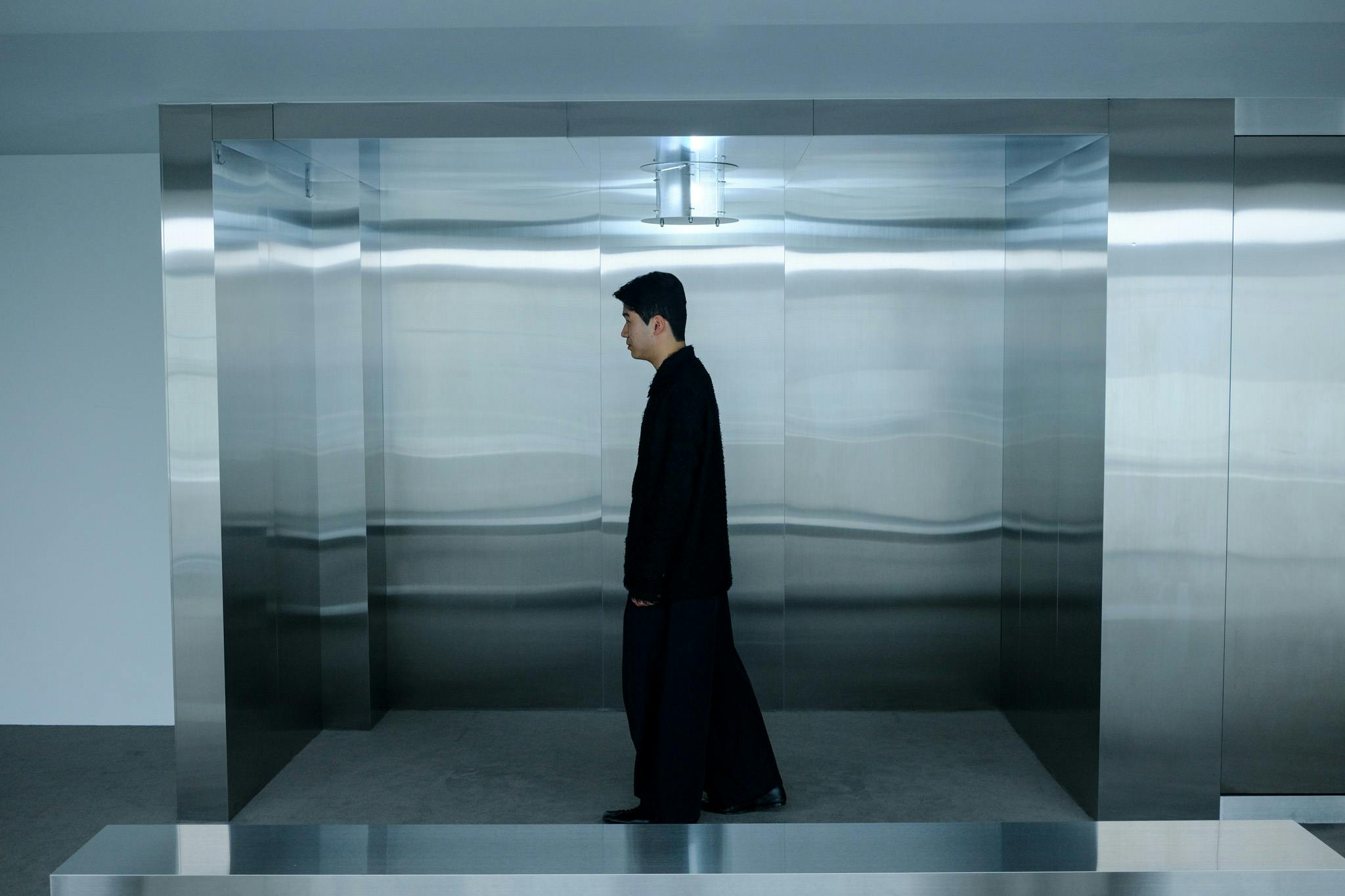
Studio Visit with Hyunseog Oh of niceworkshop. in Seoul
We visit furniture and spatial designer Hyunseog Oh's central Seoul office and one of his Interior Projects to discuss his industrial and methodical approach to design and interiors.
Grey carpet stretches across a space which emanates a strange level of comfortability, considering it is entirely made up of monochromatic industrial materials such as stainless steel and concrete. At first glance, it is quite sparse, but Oh starts showing us thoughtful details throughout the space, such as a laser-cut opening for the receipts to escape from below a steel desk, rollers on the bottom of heavy metal benches and handmade hardware on the hand-assembled furniture – I realise that everything in this space is intentional. This man doesn't miss a detail.
Hyunseog Oh is a furniture, object and spatial designer working primarily with industrial materials based in the heart of Seoul. With meticulous attention to detail, he handcrafts metal hardware and fittings and creates both starkly futuristic yet inviting spaces. Inspired perhaps by his own workaholism, we find an array of steel office objects from chunky geometric pens to mechanical cigarette dispensers: perhaps the office object I now rely on most. We chat creative process, different approaches and philosophies behind the way to think about design and interior as well as the creative spirit of Seoul.
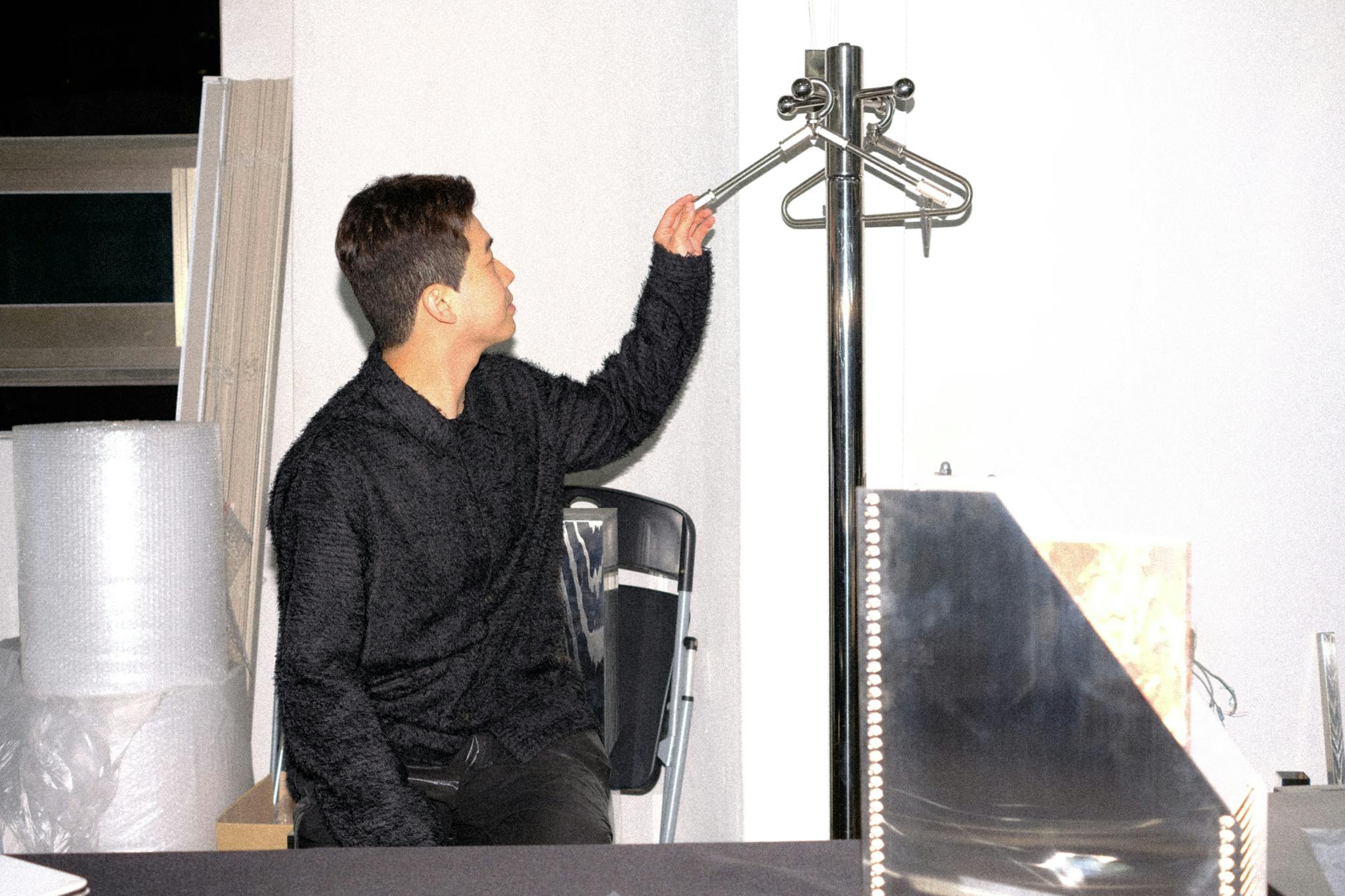
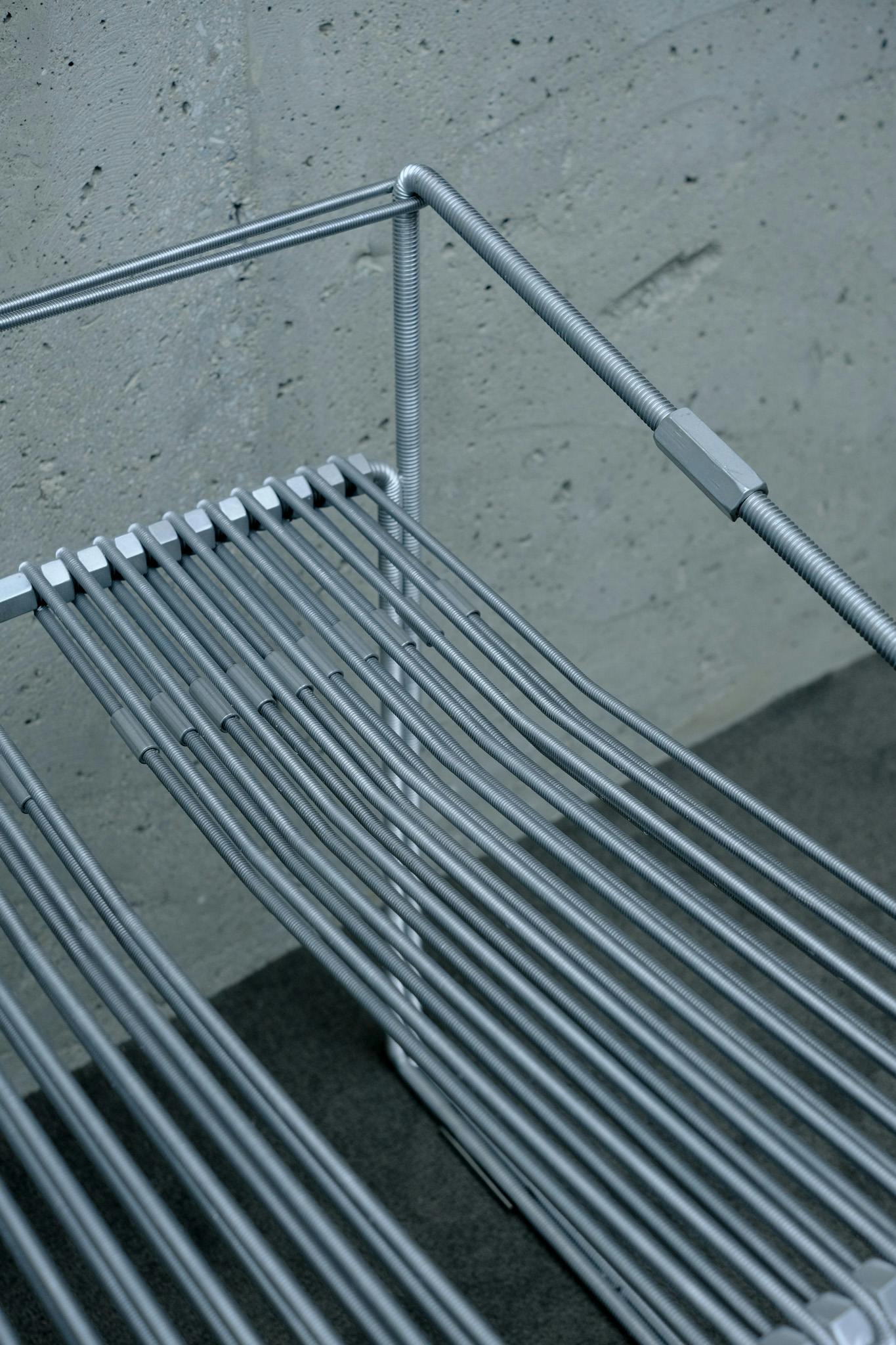
Kristen de la Vallière_ You have been working intuitively, starting with the bolt to create your first series. Can you tell us a little bit about your creative process?
첫 번째 시리즈를 만들기 위해 볼트부터 시작하여 직관적으로 작업한 것 같습니다. 창작 과정에 대해 조금 말씀해 주시겠습니까?
Hyunseog Oh_ The Bolt series is a series that was created with inspiration from the construction site during the interior project. It is mainly used as a ceiling material. It’s made of a material with high rigidity called stainless steel and has a screw thread to be combined with various hardware. Through the combination of bolts and nuts, we saw various structural possibilities. Through this, we continue to make various attempts, such as bending by applying heat and developing new hardware.
볼트 시리즈는 인테리어 프로젝트 진행 중 공사현장에서 영감을 얻어 제작하게 된 시리즈입니다. 주로 천정재로 사용되며, 스테인리스 스틸이라는 강성을 가진 재료로 제작되며 다양한 하드웨어와 결합이 가능하도록 나사산이 있습니다. 볼트와 너트의 결합을 통해 구조적으로 다양한 가능성을 보았고, 이를 통해 열을 가하여 구부리거나, 새로운 하드웨어를 개발하는 등 계속하여 다양한 시도를 이어나가고 있습니다.
My intern made me do the MBTI test the other day; what is yours?
제 인턴은 저번에 MBTI 테스트를 하게 했습니다. 당신은 무엇입니까?
ENTJ. (what is this one?)
(이게 뭐야?)
Oh, yours is similar to mine, except I end with P, and you end with J.
Reads from the phone: "Extraverted, Intuitive, Thinking, and Judging personality traits. They are decisive people who love momentum and accomplishment. They gather information to construct their creative visions but rarely hesitate for long before acting on them."
오, 당신의 것은 나와 비슷합니다. 단, 저는 P로 끝나고 당신은 J로 끝납니다.
전화에서 읽기: "외향적이고 직관적이며 생각하고 판단하는 성격 특성. 추진력과 성취를 사랑하는 단호한 사람들입니다. 그들은 창의적인 비전을 구성하기 위해 정보를 수집하지만 실행하기 전에 오랫동안 주저하는 경우는 거의 없습니다."
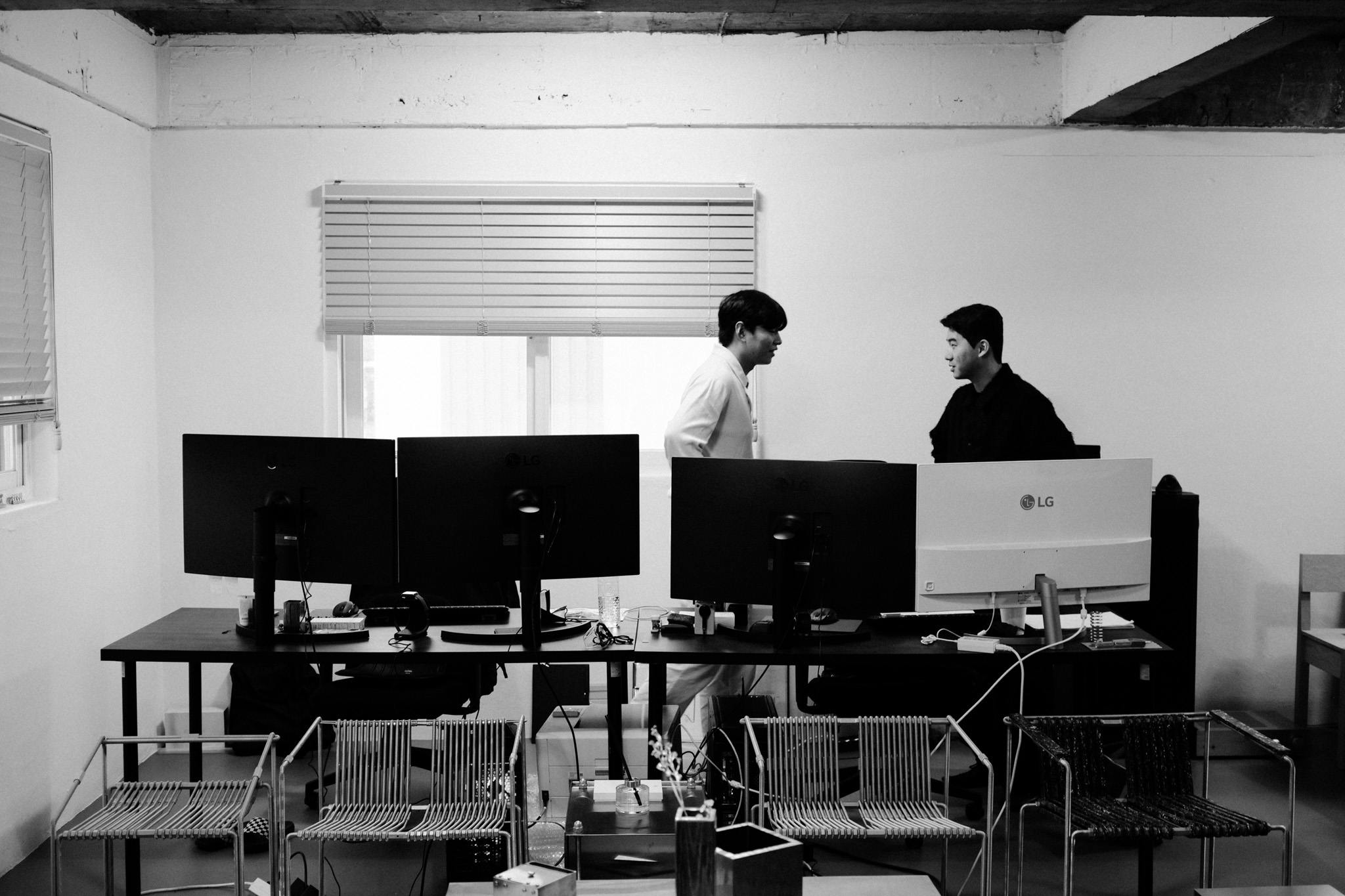
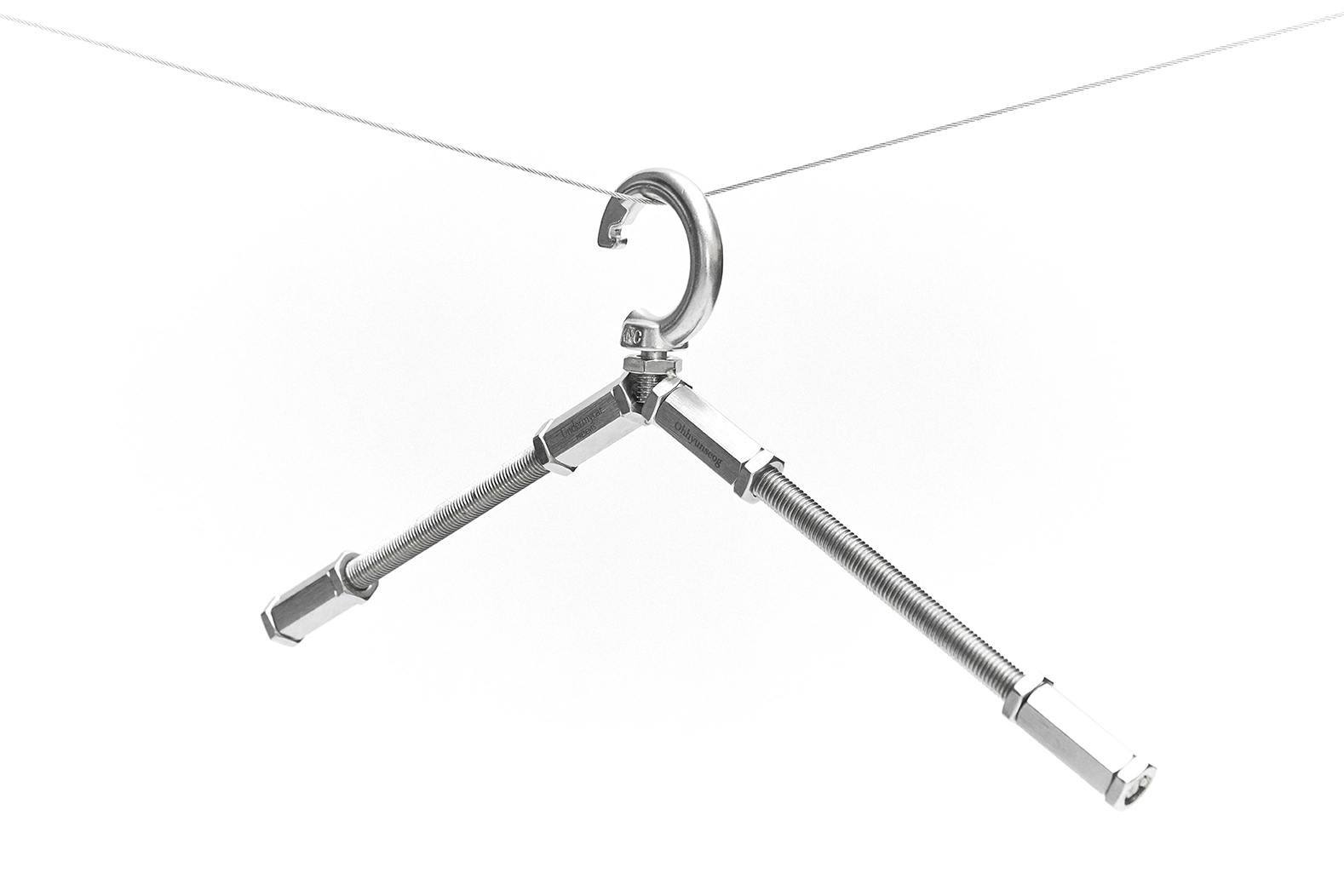
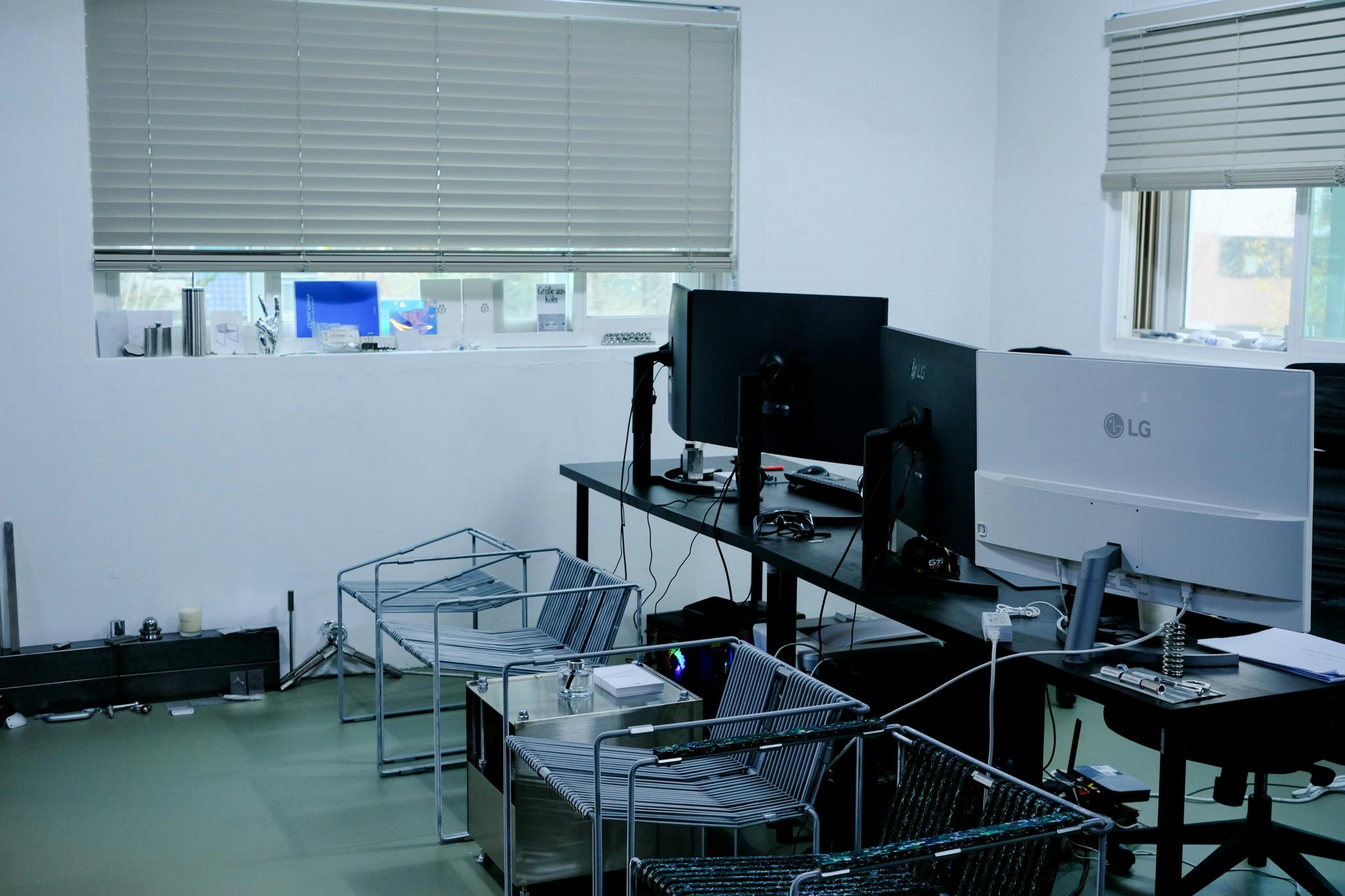
Do you plan a lot beforehand for the goals of your design studio, or do you follow opportunities and grow more organically?
디자인 스튜디오의 목표를 위해 사전에 많은 계획을 세우나요, 아니면 기회를 따라 유기적으로 성장하나요?
We tend to plan a lot in advance. No matter how thoroughly we plan, we often encounter things that deviate from our plan, either at the construction site or in producing furniture and objects. Therefore, we make thorough plans and always take organic measures to solve the problems that follow.
우리는 사전에 많은 계획을 세우는 편입니다. 아무리 철저하게 계획을 세우더라도, 건설현장에서 또는 가구와 오브제의 제작과정에서 계획에서 벗어나는 일들을 자주 마주치게 됩니다. 따라서 우리는 철저하게 계획을 세우고, 언제나 따라오는 문제해결을 위한 유기적인 대처를 하곤 합니다.
Where do you get your inspiration?
어디에서 영감을 얻나요?
Just as I was inspired by full-threaded bolts and nuts, materials that I see around me, I am mainly inspired by everyday life. If you pay attention to things you have overlooked and observe them in depth, you will get a lot of imagination and inspiration.
주변에서 볼 수 있는 재료인 전산 볼트와 너트에서 영감을 얻었듯이, 주로 일상에서 영감을 얻습니다. 무심코 지나치던 것들도 관심을 기울이고 심도 있게 관찰하면 많은 상상력과 영감을 얻게 되는 것 같습니다.
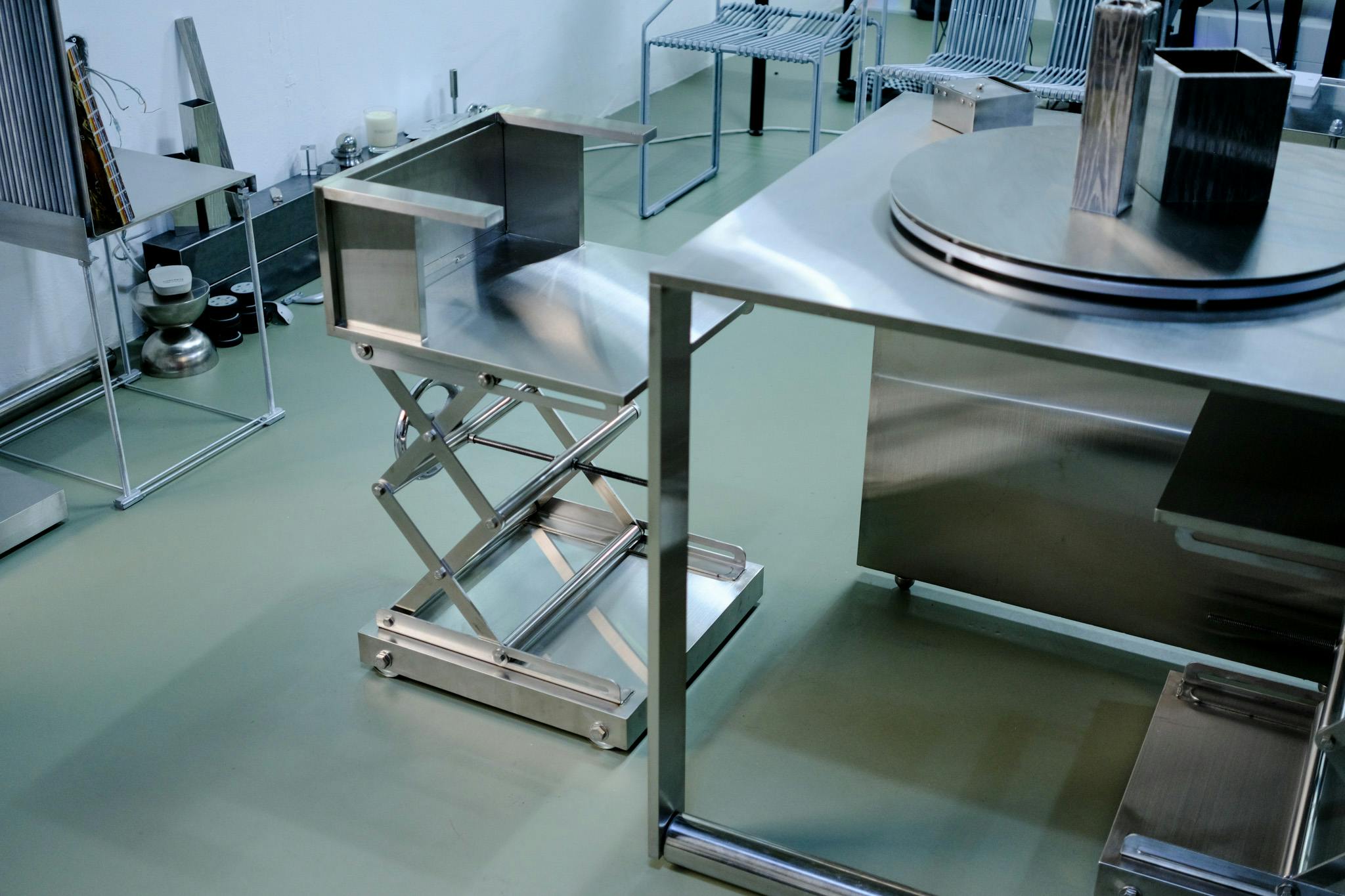

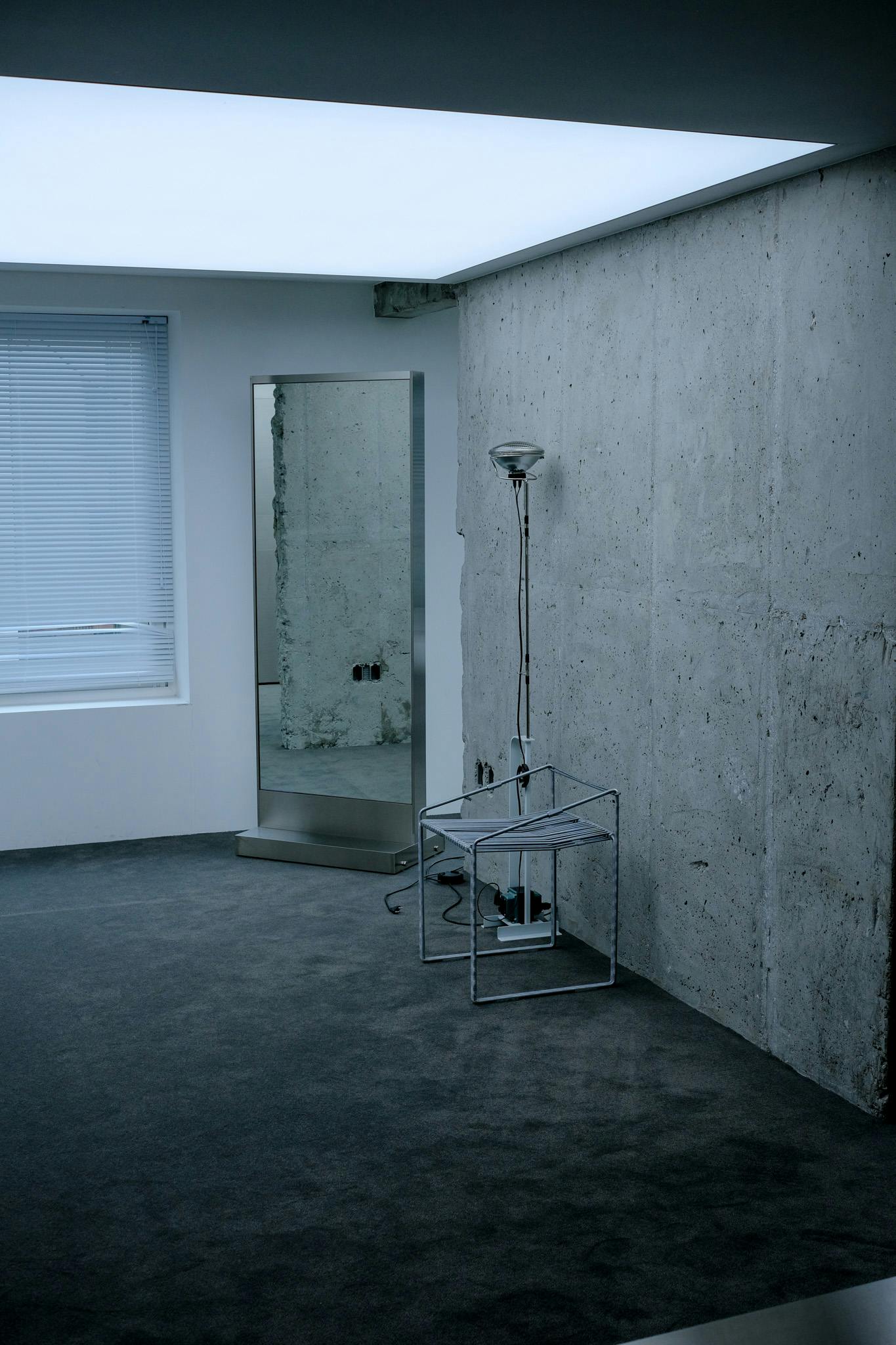
What rules do you give yourself when starting a new project or collection?
새로운 프로젝트나 컬렉션을 시작할 때 스스로에게 어떤 규칙을 부여합니까?
I am continuing a total of three furniture series, including the Bolt series, the affordance series, and the next series planned. Each series has a different story. The most basic rules start around the design of the series I've created so far. I think this is a rule that is possible because we strongly express the design philosophy and identity of niceworkshop. through the series and work with clients who see them and want our style.
나는 Bolt series, affordance series 그리고 계획중인 다음 시리즈까지 총 3개의 가구 시리즈를 이어가고 있습니다. 각각의 시리즈에는 다른 스토리가 담겨 있습니다. 가장 기본적인 규칙은 지금까지 내가 만든 시리즈의 디자인을 중심으로 시작합니다. 시리즈들을 통해 niceworkshop의 디자인 철학과 아이덴티티를 강하게 표출하고, 그것들을 보고 우리의 스타일을 원하는 클라이언트들과 일하기 때문에 가능한 규칙이라고 생각합니다.
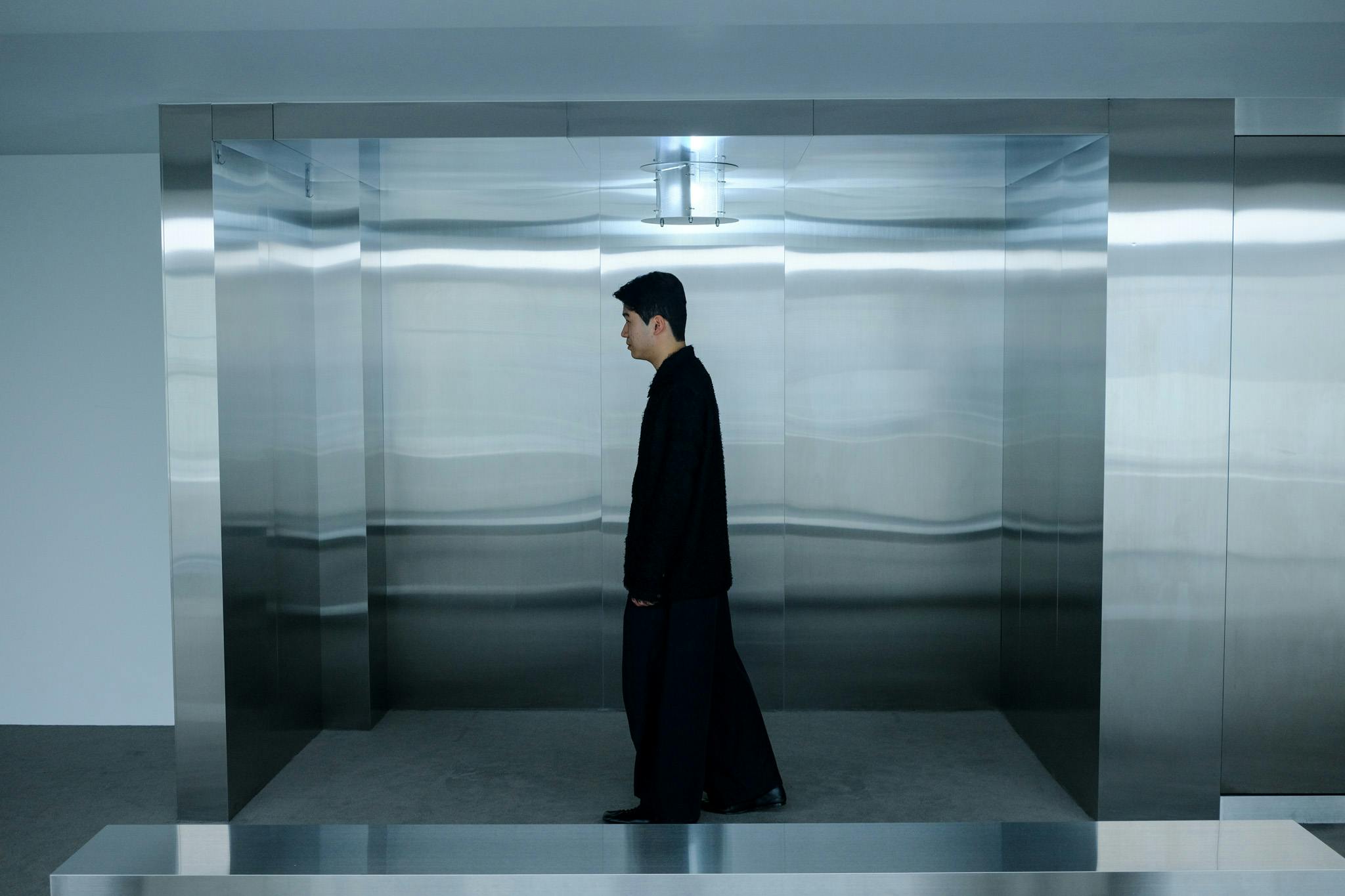

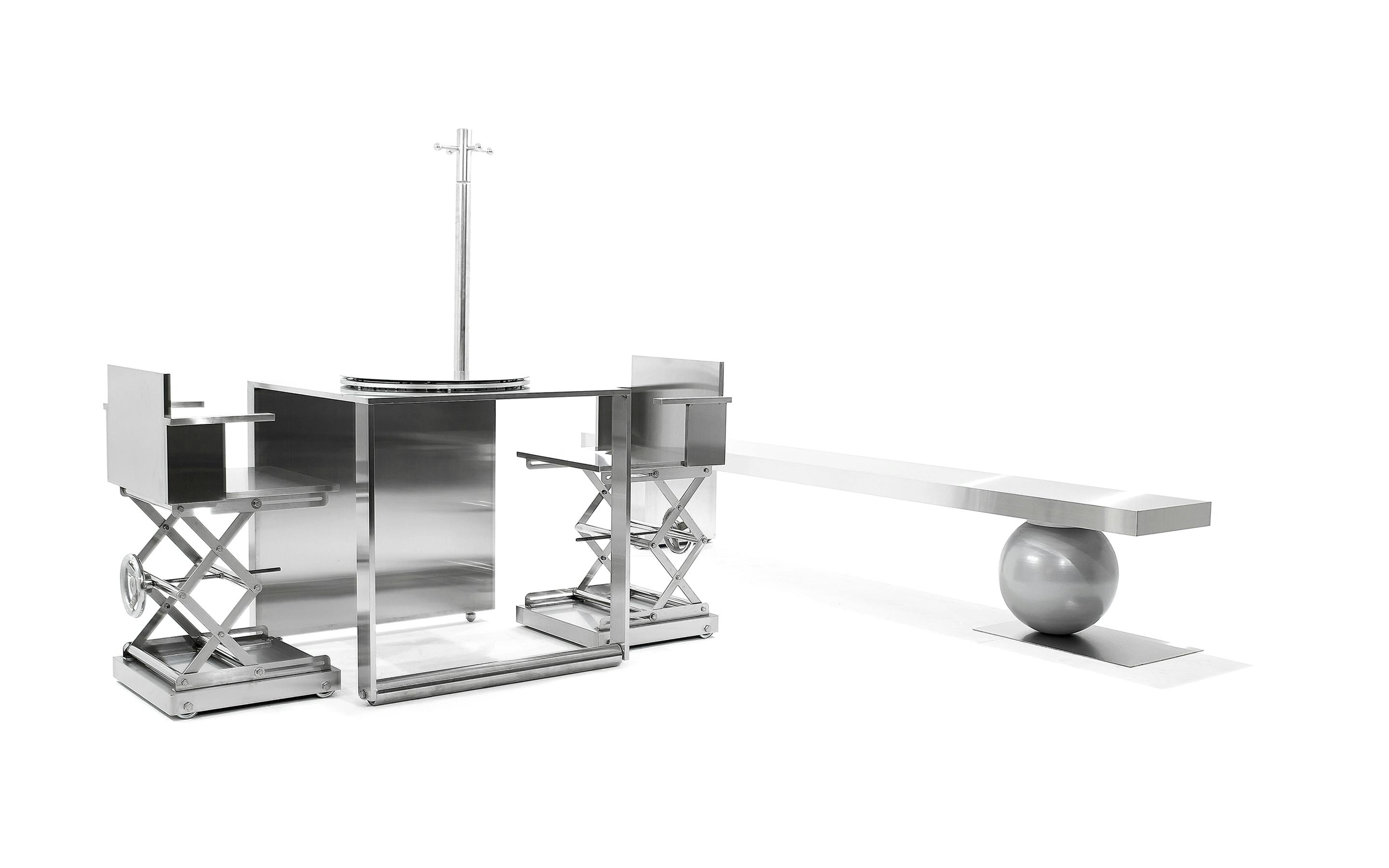
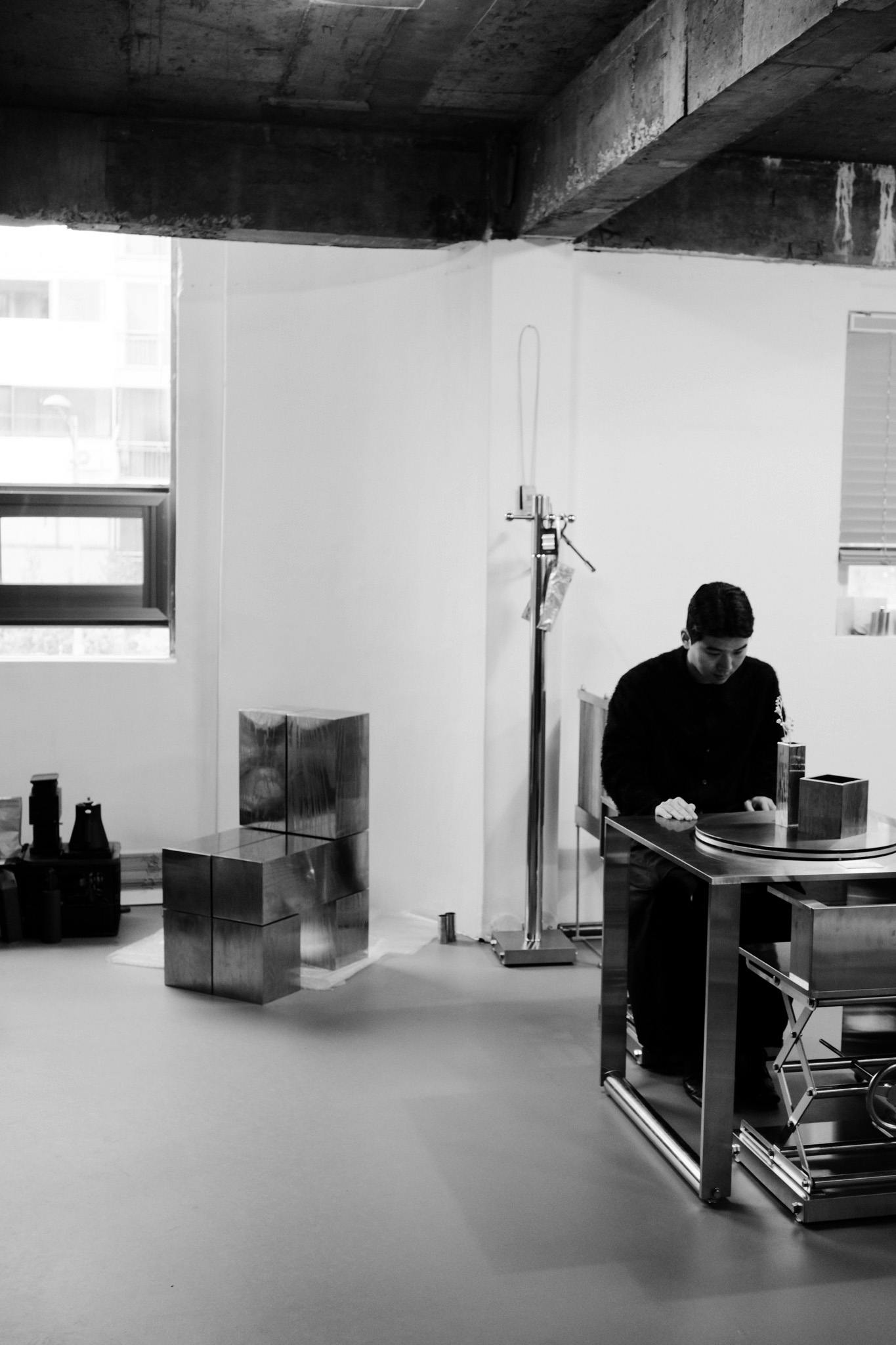
Do you approach interior design and furniture design in the same way?
인테리어 디자인과 가구 디자인을 같은 방식으로 접근 하시나요?
In conclusion, it is not.
We design spaces, furniture and objects. I would approach designing furniture with experimentation whilst expressing a strong identity that is unwilling to compromise on vision; on the contrary, when it comes to objects, I would design through a functional and rational approach. Space design is somewhere in between.
Each project will have a different personality, but interior design should generally value universality more than furniture design. We must follow universal rules on a human scale, such as the minimum width for a person to pass through the hallway and the height of the ceiling. In general, interior projects are designed from the user's point of view rather than my own, but the furniture displayed through niceworkshop is designed from a more experimental and personal point of view. We are balancing the practice between those two disciplines.
결론부터 이야기하자면, 그렇지 않습니다.
우리는 공간, 가구, 오브제 디자인을 하고 있습니다. 가구를 통해 남들과 타협하지 않는 강한 아이덴티티를 표출하면서 실험적인 작업을 한다면, 반대로 오브제를 통해 기능적이고 합리적인 접근을 통해 디자인합니다. 공간은 그 중간에 있다고 생각합니다.
프로젝트마다 성격이 다르겠지만, 일반적으로 인테리어 디자인은 가구 디자인보다 보편성을 중시 해야합니다. 사람이 복도를 지나가기위한 최소한의 폭, 천장의 높이 등 우리가 휴먼 스케일에 맞춰 지켜야 할 보편적인 규칙들이 있습니다. 큰 틀에서 보자면 일반적으로 인테리어 프로젝트는 나의 관점보단 사용자의 관점에서 디자인한다면, niceworkshop을 통해 보여주는 가구는 보다 실험적이고 개인적인 관점으로 디자인하고 있습니다. 그 안에서 균형을 맞춰가고 있습니다.
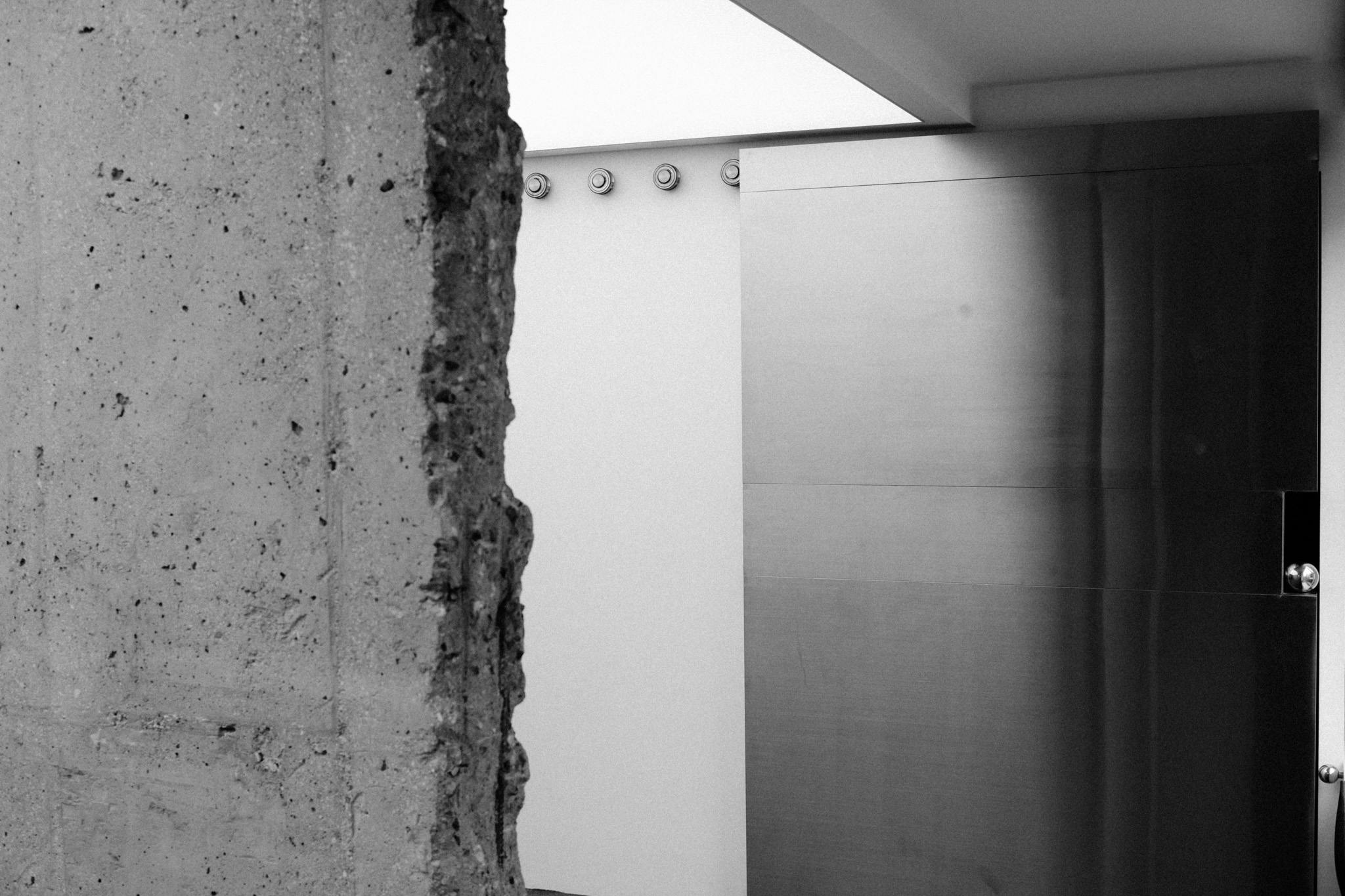
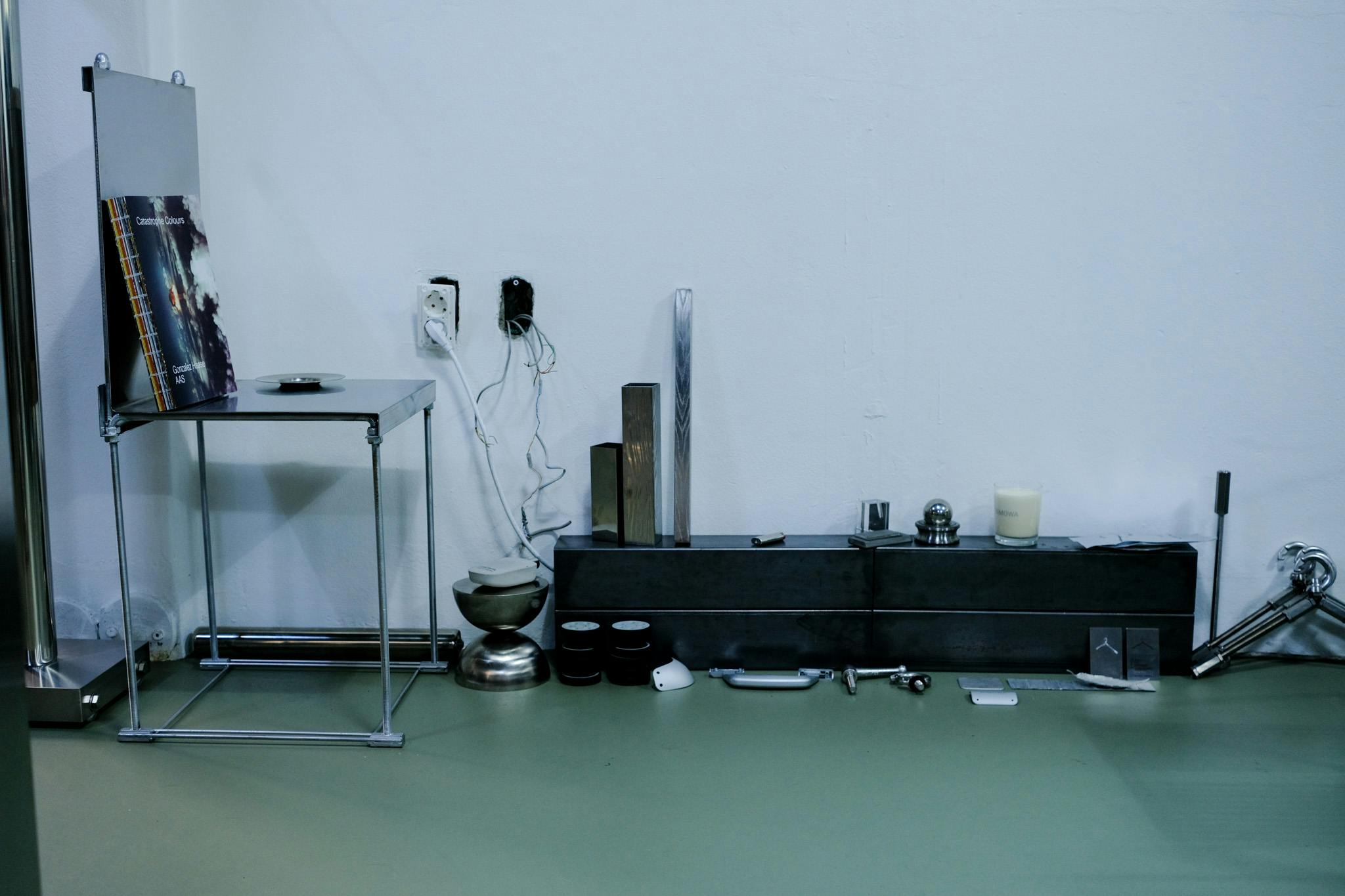

Did you keep coming to your studio office during the pandemic, or did you work from home? Could you run your business from a home office, and what is the necessity of having a separate space to work?
팬데믹 기간 동안 스튜디오 사무실에 계속 오셨습니까, 아니면 집에서 일하셨습니까? 홈 오피스에서 비즈니스를 운영할 수 있다고 생각하십니까? 별도의 작업 공간이 필요한 이유는 무엇입니까?
I've been running my studio for less than two years, but it has been only eight months since I got a studio space. Before that, I didn't have the money to rent a studio and worked alone at home. Of course, the RIMOWA project was also a project that was carried out without an office. It's not a large house, and it's not even a space where I live with my older brother, so it's inconvenient to make samples or store furniture, but I think it's possible to run it if you have passion. In some cases, I think it is better just to do it than to think too much.
나는 나의 스튜디오를 운영한지 2년이 되지 않았지만, 스튜디오 공간을 얻은 지는 8개월 밖에 지나지 않았습니다. 그 전에는 스튜디오를 구할 돈이 없었고, 집에서 혼자 일을 했습니다. 물론 리모와 프로젝트도 사무실 없이 진행했던 프로젝트입니다. 넓은 집도 아니고 심지어 형이랑 같이 사는 공간이라 샘플을 제작하거나 가구를 보관하기엔 불편하지만 열정만 있다면 충분히 운영할 수 있다고 생각합니다.
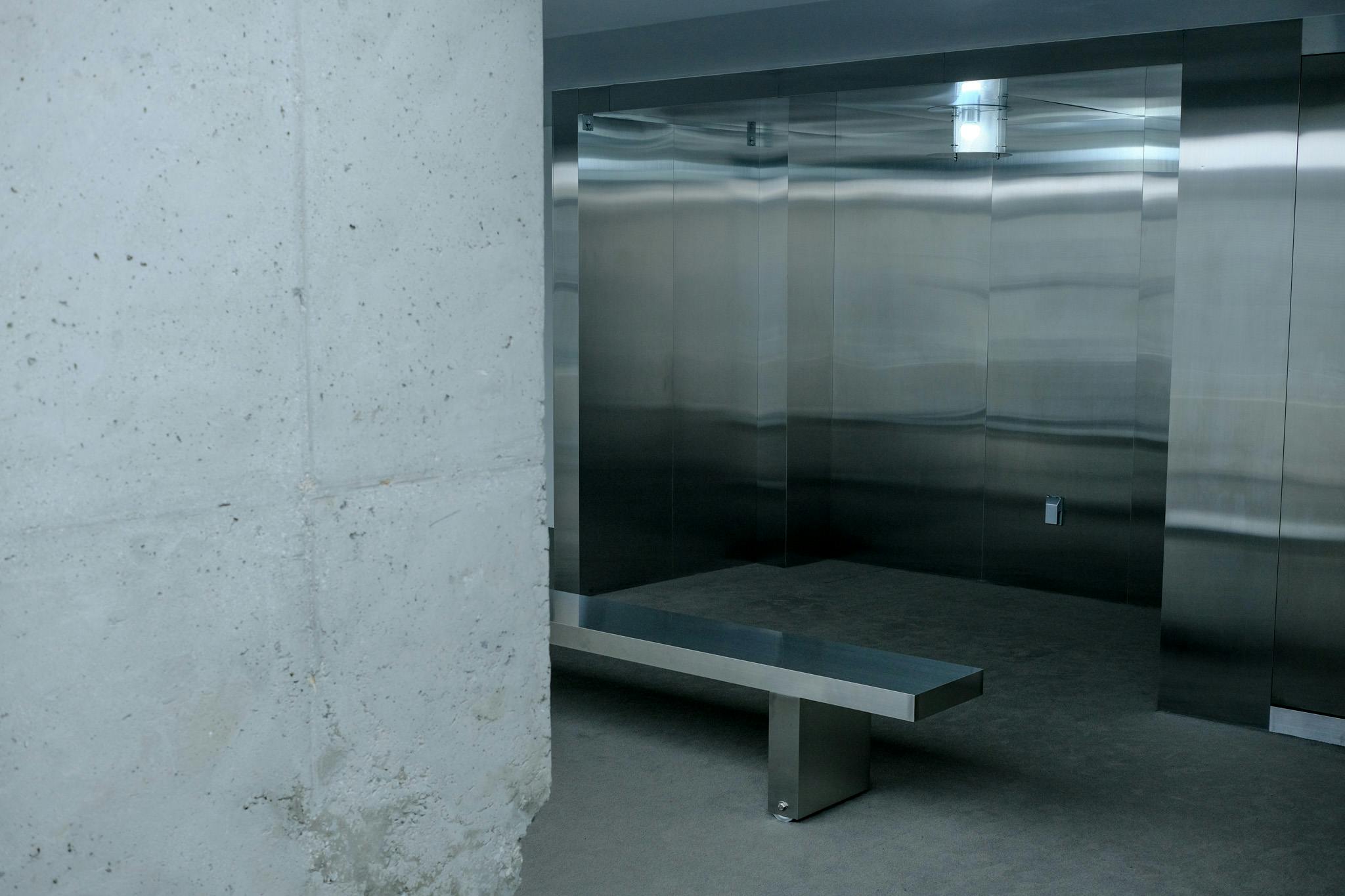

You recently participated in an exhibition for Rimowa which featured international designers from all corners of the earth. Yet, many of the designers came from South Korea – why do you think South Korea has emerged as one of the countries at the forefront of Contemporary Design?
최근 세계 각지에서 모인 해외 디자이너들이 참여한 리모와(Rimowa) 전시회에 참가했는데 대부분 한국 출신 디자이너들이 많았는데, 왜 한국이 컨템포러리 디자인의 최전선 국가 중 하나로 부상했다고 생각하시나요?
There could be many reasons, but one of them is increased international awareness. With the emergence of globally prominent brands and talents in various fields such as music, movies, and fashion, I think Korea is paying a lot of attention to contemporary design as well. Their works have been introduced in major design events and exhibitions worldwide, drawing attention from the domestic design world. I'm lucky to be working in the same era as them, so I'm receiving good influence and energy from them.
여러가지 이유가 있겠지만, 그 중 하나는 국제적인 인지도 증가인 것 같습니다. 음악, 영화, 패션 등 다양한 분야에서 세계적으로 두각을 나타내는 브랜드나 인재들이 등장함과 동시에 컨템포러리 디자인에서도 한국에 많은 주목을 하고 있지 않나 생각합니다. 이들의 작품은 전 세계 주요 디자인 행사와 전시회에 소개되어 국내 디자인계에 주목을 불러일으켰습니다. 저는 운이 좋게도 그들과 같은 시대에 일하고 있어서 좋은 에너지를 공유 받고 있다고 생각하고요.
You have also collaborated with brands in the fashion industry. What kind of relationship do you see between the fashion and the design industries?
패션 업계의 브랜드들과도 콜라보레이션을 하셨는데요. 패션과 디자인 업계의 관계는 무엇이라고 생각하시나요?
I think the relationship between the fashion and furniture design industries is quite interesting. Fashion brands and the industries I work in may differ greatly, but we share a similar goal of creating aesthetically pleasing and functional products that meet the needs and desires of consumers. I get the motivation to move forward through these interactions.
패션과 가구 디자인 산업의 관계가 상당히 흥미롭다고 생각합니다. 패션 브랜드와 내가 일하는 산업은 크게 다를 수 있지만 소비자의 요구와 욕구를 충족시키는 미학적으로 만족스럽고 기능적인 제품을 만드는 것은 비슷한 목표를 공유합니다. 나는 이러한 상호 작용을 통해 앞으로 나아갈 추진력을 얻습니다.
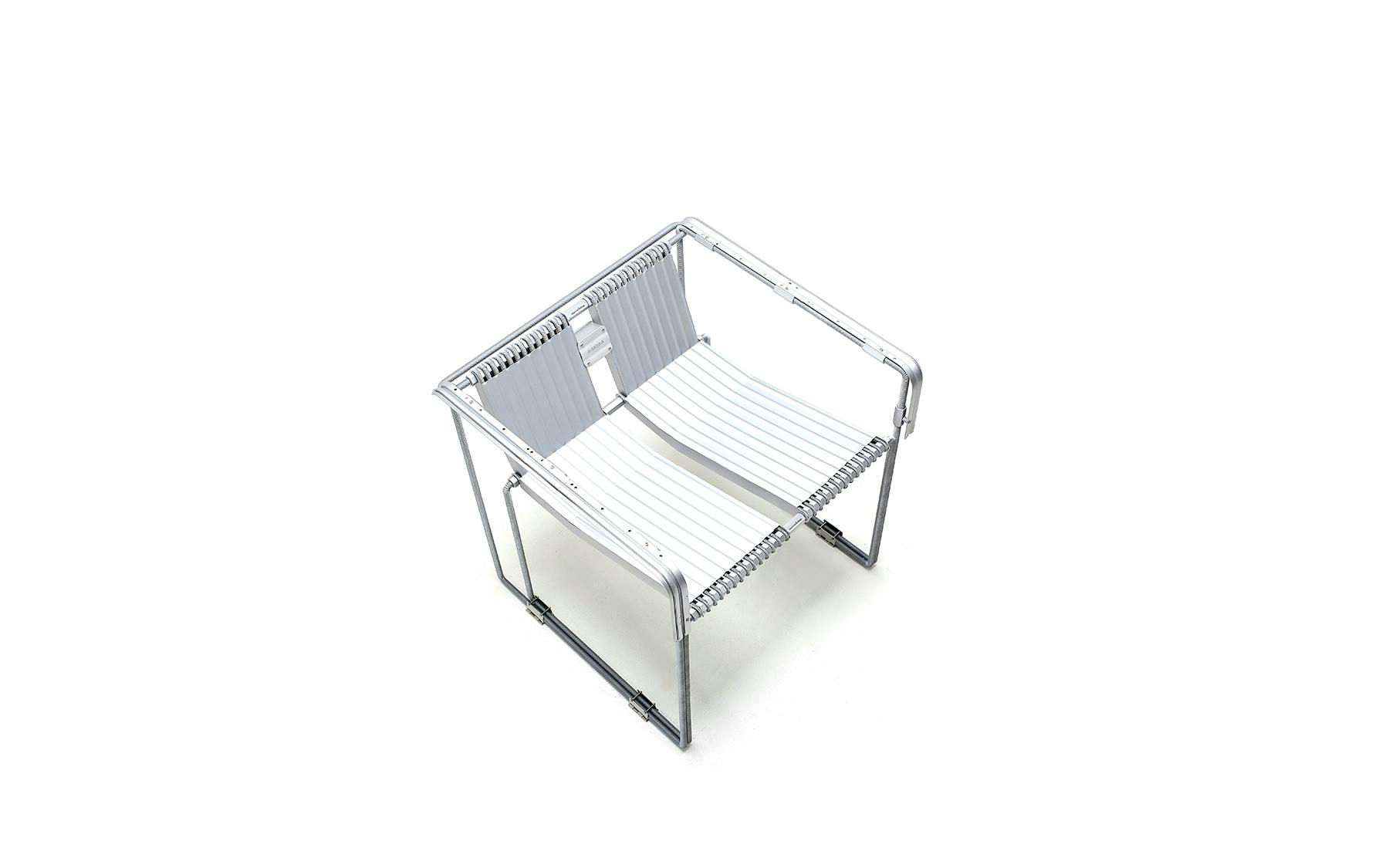
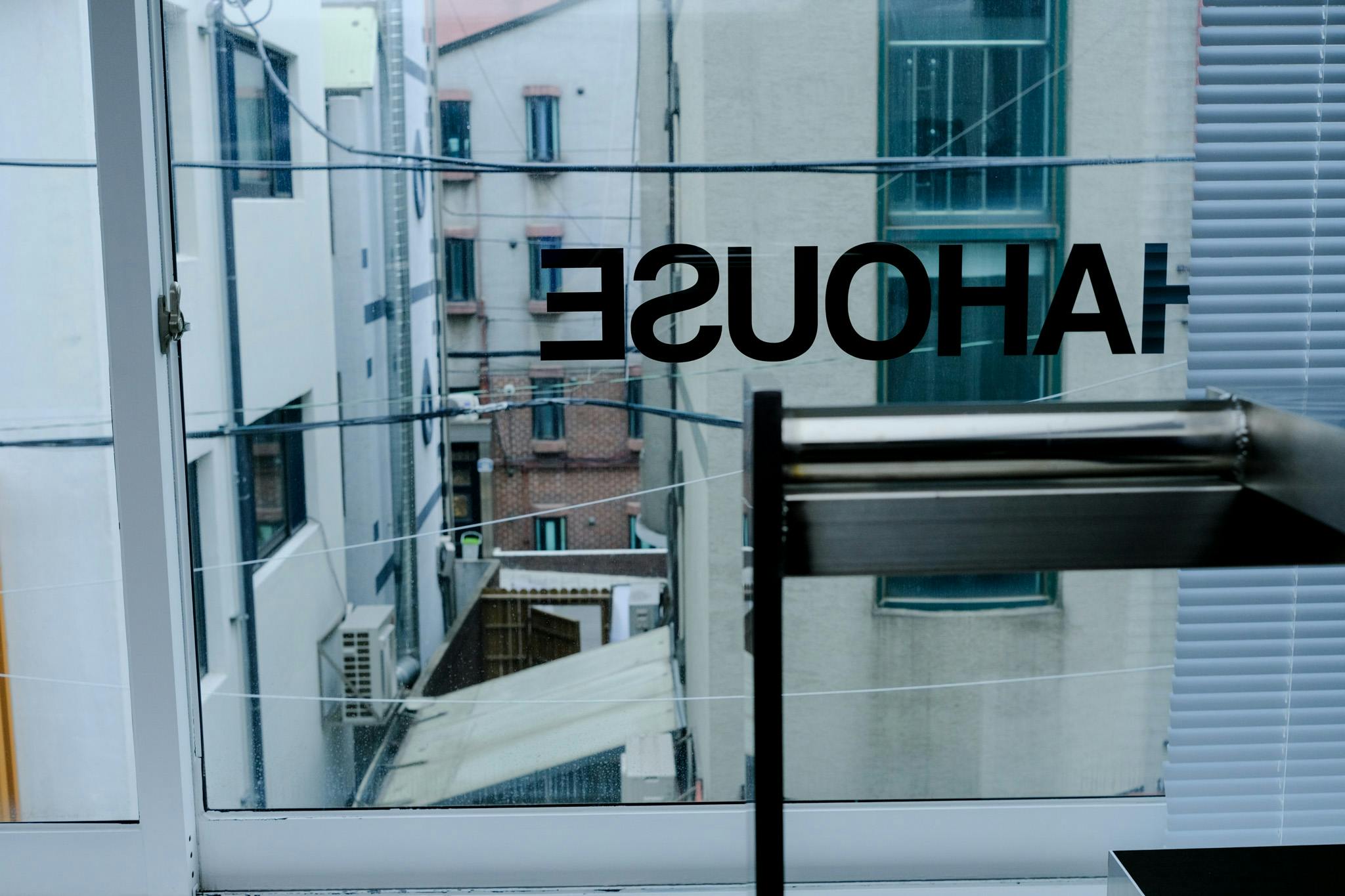
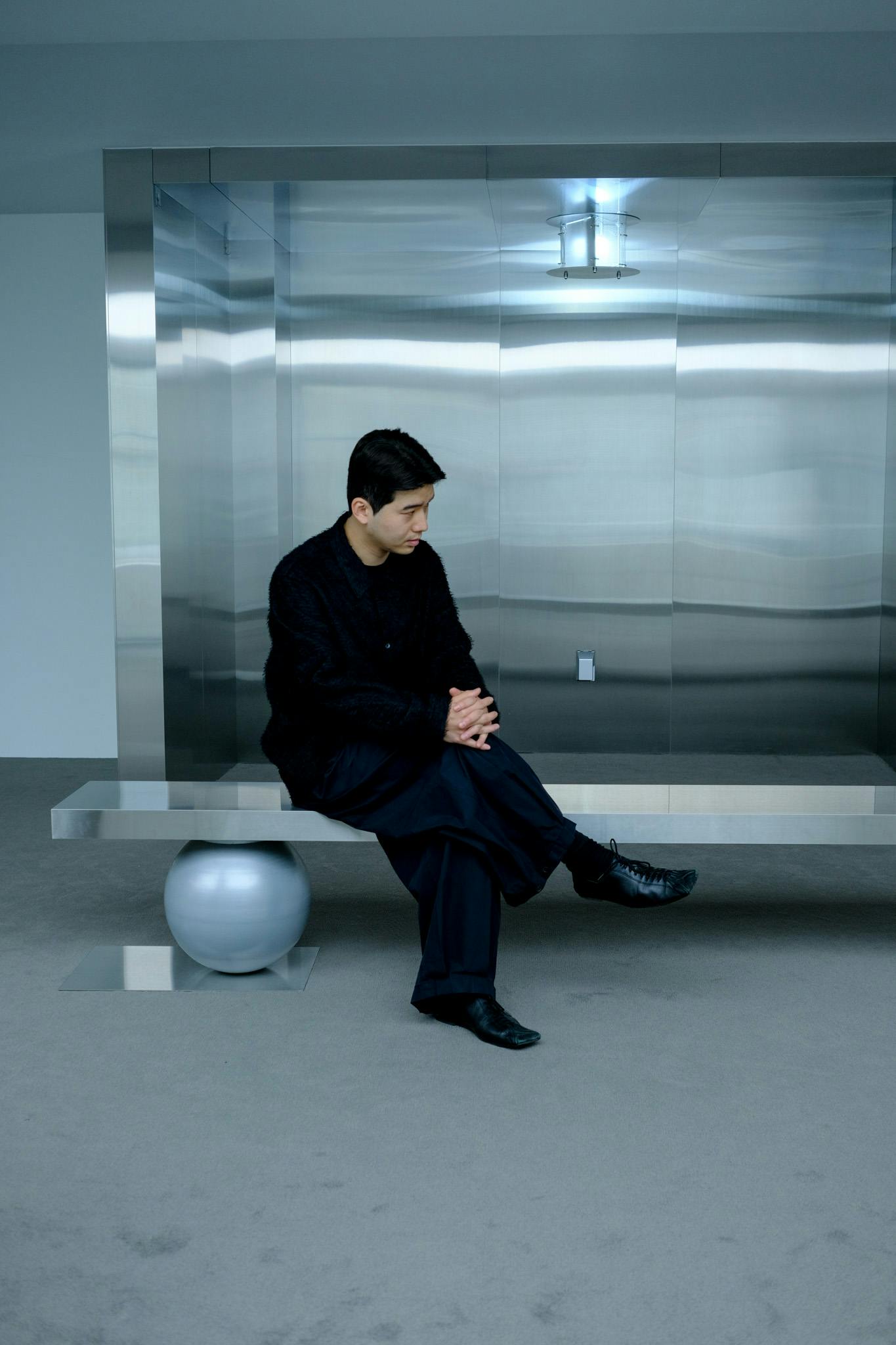
Can you please tell us about where we are, HAHOUSE? How were you involved in this space?
우리가 어디에 있는지, HAHOUSE에 대해 알려주실 수 있나요? 어떻게 이 공간에 참여하게 되었나요?
I designed the whole interior and the furniture. It is very industrial. This place is used for gallery exhibitions and pop-up projects. So it's divided into three sections. When we started this project, I worked on a new furniture series that employs ‘action’ in the furniture, such as this sliding door.
전체 인테리어와 가구를 디자인했습니다. 매우 산업적입니다. 갤러리 전시 및 팝업 프로젝트에 사용됩니다. 그래서 세 부분으로 나뉩니다. 이 프로젝트를 시작했을 때 이 슬라이딩 도어처럼 가구에 '액션'을 활용한 새로운 가구 시리즈를 작업하고 있었습니다.

